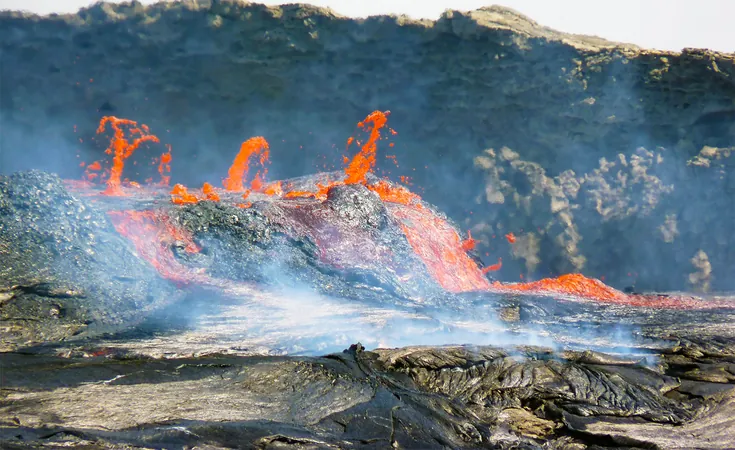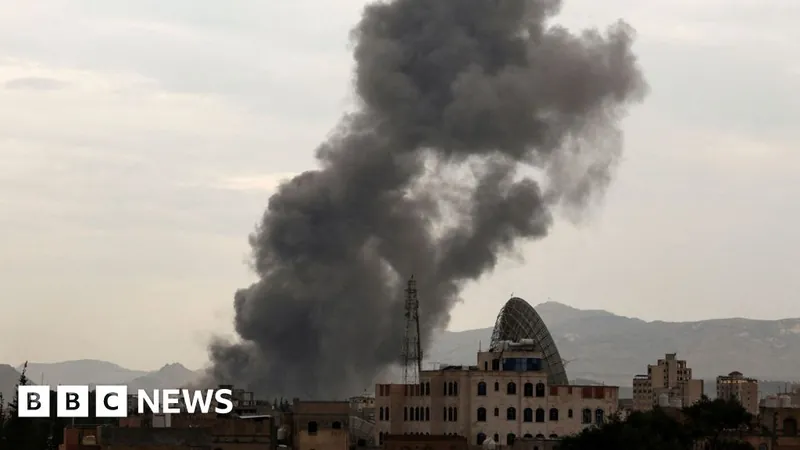
Earth's 'Geological Heartbeat': A New Ocean is Forming and Africa is Splitting!
2025-09-11
Author: Yan
A Deep Discovery Beneath Africa
Deep within the Earth’s mantle, a powerful geological phenomenon is at work—a 'heartbeat' of heat that is driving the formation of a new ocean and causing the African continent to slowly split apart.
The Birthplace of Volcanic Activity
In the Afar Depression of East Africa, where three tectonic plate boundaries converge—the Main Ethiopian Rift, the Red Sea Rift, and the Gulf of Aden Rift—scientists have long speculated about the presence of a massive mantle upwelling. Recent research has finally unveiled its structure and mechanisms, shedding light on the dynamic forces beneath the surface.
Unlocking the Secrets of the Mantle
A team from the University of Southampton analyzed lava samples from over 130 young volcanoes in the region. Their findings reveal that the mantle beneath Afar is not merely a single stream of heat; rather, it is an intricate 'patchwork' of various hot mantle materials.
The Heartbeat of the Earth
According to lead researcher Emma Watts, the pulses from this upwelling are distinct and carry unique chemical signatures. These 'ascending pulses of partially molten mantle' are influenced by the rifting plates above. This creates a mechanism that allows this bubbling heat to rise more easily, further thinning the crust and paving the way for new oceanic formation.
A Geological Symphony of Movement
Co-author Tom Gernon likens this phenomenon to a heartbeat. 'The chemical striping indicates the plume is pulsing,' he explains. Depending on the rate at which the tectonic plates are stretching, the mantle’s behavior varies; in fast-moving regions such as the Red Sea Rift, flow is concentrated, while it spreads out more gradually in other areas.
A New Perspective on Continental Breakup
This study challenges traditional views of how continental divisions occur. Co-author Derek Keir emphasizes that this mantle evolution is intricately linked to the motion of tectonic plates. The erosion of the lithosphere—Earth’s rigid outer shell—by the hot upwelling leads to volcanic eruptions that could soon allow seawater to flood in, marking the impending split of the Horn of Africa from the mainland.
Geological Ramifications Beyond the Region
The implications of these findings reach far beyond East Africa. Understanding the tempo of the Afar plume could provide insights into historical volcanic eruptions and environmental shifts throughout Earth’s history. Large volcanic provinces from the past, such as the North Atlantic Igneous Province, are believed to have spurred significant climate changes—and researchers aim to explore if similar patterns can be observed in the Afar region.
A Bright Future for Earth Sciences
Continued research will focus on mapping mantle flow beneath thin tectonic plates and its influence on volcanic activity. With collaborative efforts across various institutions, scientists hope to piece together the intricate puzzle of processes occurring beneath the Earth's surface. 'It’s like assembling a puzzle without all the pieces,' Watts concluded.
Observing Earth’s Ongoing Evolution
For now, scientists can hear the rhythmic pulses of the mantle beneath Ethiopia—a clear signal of the immense geological forces at play. This heartbeat is slowly but surely reshaping the landscape, creating the potential for a new ocean as Africa divides.


 Brasil (PT)
Brasil (PT)
 Canada (EN)
Canada (EN)
 Chile (ES)
Chile (ES)
 Česko (CS)
Česko (CS)
 대한민국 (KO)
대한민국 (KO)
 España (ES)
España (ES)
 France (FR)
France (FR)
 Hong Kong (EN)
Hong Kong (EN)
 Italia (IT)
Italia (IT)
 日本 (JA)
日本 (JA)
 Magyarország (HU)
Magyarország (HU)
 Norge (NO)
Norge (NO)
 Polska (PL)
Polska (PL)
 Schweiz (DE)
Schweiz (DE)
 Singapore (EN)
Singapore (EN)
 Sverige (SV)
Sverige (SV)
 Suomi (FI)
Suomi (FI)
 Türkiye (TR)
Türkiye (TR)
 الإمارات العربية المتحدة (AR)
الإمارات العربية المتحدة (AR)